marijuana growing
Harness Rainwater for Sustainable Cannabis Cultivation at Home
Published
7 months agoon
By
admin
As the world grapples with climate change and resource scarcity, a growing awareness has emerged around sustainable practices, especially in the area of cultivation. Green thumb enthusiasts, amateur horticulturists, and professional growers are all actively seeking environmentally-friendly methods to nourish their plants. Our focus for today’s discourse, however, pertains to a particular plant that’s stirred much debate and interest – cannabis.
In the burgeoning field of cannabis cultivation, we emphasize a resource that’s abundantly available, yet often overlooked – rainwater. This valuable, natural element holds immense potential in our cultivation practices, primarily due to its compatibility with the unique needs of cannabis plants. This comprehensive guide explores the multifaceted benefits of rainwater for cannabis irrigation, offering a deep dive into its inherent properties and significance.
Furthermore, it serves as a hands-on manual, outlining actionable tips and tricks to aid you in establishing an effective rainwater harvesting system. The aim here is not merely to inform but to equip you with the tools and knowledge needed for a self-sustained, eco-friendly cannabis cultivation journey right at home. It’s a testament to the harmony we can achieve between nature’s gifts and our cultivation practices.

Why Rainwater is the Best for Cannabis Cultivation
The assertion that rainwater is the optimum choice for cannabis cultivation derives its strength from various factors, central of which is rainwater’s inherent softness. This feature refers to its significantly lower mineral content compared to the relatively ‘hard’ tap water. It might seem counterintuitive – after all, aren’t minerals good for plants? However, when it comes to cannabis cultivation, this softness is indeed beneficial.
Cannabis plants, like many other flora, possess a symbiotic relationship with a category of fungi known as mycorrhizae. These mycorrhizae colonize the plant roots, facilitating improved nutrient and water uptake while protecting the roots from harmful pathogens. The softness of rainwater allows it to be easily absorbed by these fungal networks, thereby optimizing nutrient delivery to cannabis plants. This absorption efficiency promotes superior growth, enhancing the overall health and yield of the cannabis crop.
Rainwater also has a neutral pH level, a key factor in successful cannabis cultivation. Cannabis plants thrive in a slightly acidic to neutral pH range, around 6.0 to 7.0. Rainwater typically falls within this range, providing an optimal environment for nutrient absorption. It helps in the availability of vital nutrients like nitrogen, phosphorus, and potassium, thus encouraging healthier, more robust growth.
Using rainwater also brings us one step closer to sustainable cannabis cultivation. It allows growers to lower their dependence on municipal water supplies, many of which are treated with chemicals such as chlorine and chloramines that may be detrimental to the beneficial microbial life within the soil. This sustainability angle not only benefits the environment by conserving water but also leads to a cultivation method that aligns with nature’s rhythm, providing a naturally superior quality crop.
Setting Up Your Rainwater Collection System
As we embark on the journey of rainwater collection, the DIY approach opens up an exciting opportunity to create a system that aligns with your specific requirements and constraints. This process involves a few crucial steps, from selecting an ideal collection system to installing it correctly and ensuring its maintenance.
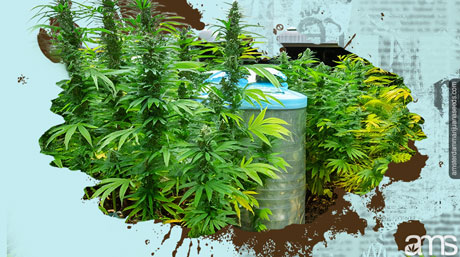
Choosing a Collection System: Picking the right container to collect rainwater is the first crucial step. Commercial rain barrels are readily available in various sizes and designs, fitting different budget ranges and aesthetic preferences. They typically come with built-in spigots, lids, and overflow mechanisms, making them a convenient choice for beginners. On the other hand, repurposing food-grade containers can be a cost-effective and eco-friendly alternative. Make sure your chosen container is sturdy, opaque (to prevent algae growth), and non-toxic. Remember to fit it with a secure lid to prevent debris and insect contamination and an overflow valve to deal with excess water.
Installation: Proper placement of your rain barrel is critical for effective collection. Locate it under a downspout that drains a large portion of your roof to maximize the capture of rainwater. Consider adding a diverter to the downspout, which directs water to the barrel when it’s raining and routes it away when it’s full. The base of your barrel should be stable and elevated – not only does this make accessing the spigot easier but it also increases water pressure, facilitating better flow when you’re irrigating your cannabis plants.
Water Treatment: While rainwater is typically clean, it can pick up pollutants as it travels down your roof, particularly if you live in an urban area with higher air pollution levels. To address this, consider adding a pre-filtration system. A simple method is using a screen mesh to filter out larger debris like leaves and twigs. For finer filtration, a roof washer system can be implemented. This system discards the first flush of rainwater, which carries the majority of contaminants, and only collects the cleaner water that follows. In any case, it’s important to routinely clean your barrel to maintain water quality.
By meticulously setting up your rainwater collection system, you are laying a solid foundation for a flourishing cannabis garden. This is a significant stride towards an environmentally-friendly cultivation approach that contributes to water conservation efforts while also meeting your cannabis plants’ unique needs.
Rainwater and Your Cannabis Plants
Now that you’ve successfully collected rainwater, the next step is to use this natural resource to nourish your cannabis plants. The process is not just about watering; it’s about understanding the unique water requirements of your plants at different growth stages, implementing proper irrigation techniques, and avoiding common mistakes like overwatering. This section provides an in-depth look at these aspects.
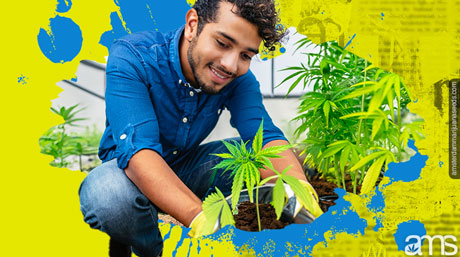
Understanding the Watering Needs of Your Cannabis Plants
The water requirement of cannabis plants varies throughout their life cycle. During the vegetative stage, cannabis plants are growing rapidly, putting out new leaves and branches, hence they need ample water. Regular watering at this stage ensures the plants get adequate moisture to support their vigorous growth.
However, as the plants enter the flowering stage, their water requirements change. They grow slower, and their focus shifts from leaf production to developing buds. Thus, they require less water compared to the vegetative stage. Overwatering during this phase can lead to problems like root rot and fungal diseases, potentially harming your yield.
Understanding these changing needs is essential for successful cannabis cultivation. It’s about achieving a balance – providing enough water for your plants to thrive, but not so much that it leads to detrimental conditions.
Implementing Proper Watering Techniques
When it comes to watering your cannabis plants, the methodology is as important as the frequency. A watering can or a hose attached to the spigot of your rain barrel can be used. However, it’s essential to water your plants slowly and evenly, allowing the water to seep into the soil gradually. This method ensures the water reaches the root zone effectively, promoting healthy root growth and nutrient uptake.
In container gardening, a common technique is to water until a little water comes out of the bottom of the container. This runoff indicates that the water has thoroughly penetrated the soil, ensuring that the roots throughout the pot have access to water. However, it’s important not to let the plants sit in this runoff, as it could lead to oversaturation.
In terms of frequency, cannabis plants typically prefer a cycle of wet and dry periods rather than constant moisture. A common approach is to water the plants thoroughly, then wait until the top inch or so of soil dries out before watering again. This method prevents overwatering while ensuring the plants receive enough hydration to grow healthily.
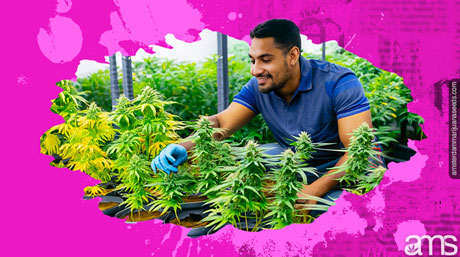
Monitoring Plant Health for Optimal Watering
Observing your plants is a key aspect of effective watering. Signs of overwatering include drooping leaves, yellowing, and a general appearance of being ‘overly lush.’ On the other hand, underwatered plants may also exhibit drooping, but they typically perk up quickly after being watered.
In conclusion, using rainwater for your cannabis plants involves more than merely replacing tap water. It requires an understanding of the plants’ unique water needs at different stages of growth, implementing proper watering techniques, and regularly observing the plants for any signs of distress. With careful attention and practice, using rainwater for cannabis cultivation can significantly enhance your plants’ health and yield, while also contributing to a sustainable and environmentally-friendly gardening practice.
In Conclusion: A Satisfying Cultivation Experience
Embracing rainwater as an irrigation resource for your cannabis cultivation brings about a profound sense of satisfaction. You’re not just nurturing plants; you’re stepping into the realm of sustainable, environmentally conscious gardening practices. The journey from setting up your own rainwater collection system to comprehending the specific needs of your cannabis plants, culminates in the joy of witnessing the fruits of your labor.
This immersive experience not only enriches your understanding of cannabis cultivation, but also fosters a deep sense of pride. You are equipped with practical, hands-on expertise, an asset of immense value in our increasingly eco-aware society. With the availability of rainwater, your homegrown marijuana plants can truly thrive, making your cultivation endeavors rewarding and fulfilling.
As we wrap up our discussion on harnessing rainwater for cannabis cultivation, it’s crucial to remind ourselves of the importance of legality. Always ensure that your cultivation practices comply with local laws and regulations concerning cannabis cultivation. The essence of sustainable cultivation lies in marrying harmony with nature and respect for the law.
In line with our commitment to providing a satisfying and enlightening experience, we recommend checking out Amsterdam Marijuana Seeds. This platform offers a variety of high-quality seeds and an array of cultivation guides. Whether you’re a novice or an experienced cultivator, you’ll find resources tailored to your needs, and seeds that’ll help you begin or continue your sustainable cannabis cultivation journey.
Embrace the green thumb within you, and embark on a responsible and satisfying cannabis cultivation journey.
You may like
-


What To Call The Illegal Marijuana Market
-


Pakistan Makes Positive Move On Cannabis
-


The Dangers and Effects of THC Vape in UK
-


How to Buy or Sell a Cannabis Business: The Webinar Replay
-


Alabama Senator Calls State Medical Cannabis Commission A ‘Money Pit’ Amid Ongoing Litigation
-


Is Thailand about to Change Their Cannabis Laws Yet Again?
marijuana growing
“2024 Lunar Calendar Guide for Cannabis Cultivation Success”
Published
2 months agoon
March 12, 2024By
admin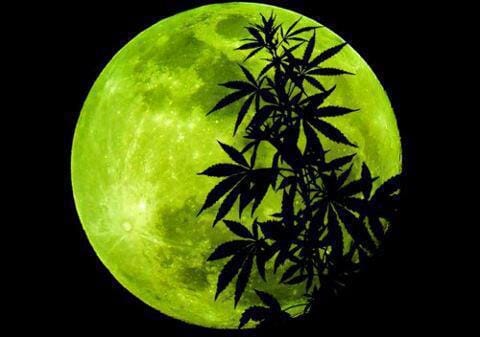
Lunar Calendar for the 2024 Growing Season
Discover how the lunar phases in 2024 influence key moments in cultivation:
Germination: Perform germination during the full moon in fire signs (Aries, Leo, Sagittarius) on dates like January 25 and May 23.
Soil Preparation: Take advantage of specific dates, such as February 27 and March 24, to prepare the substrate during the waning moon in Virgo.
Transplant: Transplant during the waxing moon in water signs (Cancer, Scorpio, Pisces) on dates like March 20 and June 9.
Training and Pruning: Apply training techniques during the waxing moon in water constellations (Pisces, Cancer, Scorpio) on dates like March 11 and June 9.
Fertilization: Fertilize during the waning moon in water signs on dates like March 3 and June 29.
Harvest: Opt for harvesting in air constellations (Gemini, Libra, Aquarius) during the waxing moon or full moon on dates like September 17 and August 19.
Follow the lunar calendar and enhance your marijuana cultivation for exceptional harvests in 2024.
Cultivation of Cannabis at Home:
With the advancement of legalization in various parts of the world, there is a growing interest among individuals to cultivate their own marijuana plants at home. However, it is of utmost importance to approach this subject with responsibility and awareness, as marijuana cultivation involves legal and safety responsibilities. Additionally, proper cultivation management not only ensures compliance with regulations but also contributes to obtaining optimal plant quality, avoiding the use of chemicals that could harm its natural development and life cycle. This responsible approach not only promotes healthy cultivation but also safeguards the integrity of the environment and the well-being of those involved in this practice.
1. Legality and Regulations:
It is essential to start any cultivation project with a clear understanding of local laws and regulations. In many places, the possession and cultivation of marijuana are regulated, and even in areas where it is legal, there are limits on the number of allowed plants. Being informed about local regulations is crucial to avoid legal issues.
2. Seed Selection:
Choosing the right seeds is a crucial step. There are varieties with different levels of THC and CBD, as well as autoflowering options that simplify the process. Researching and selecting seeds that suit your needs and skills are key to successful cultivation.
3. Controlled Environment:
Creating a controlled environment is essential for the healthy growth of plants. Marijuana requires specific conditions of light, temperature, and humidity to thrive. Installing a suitable lighting system and regulating the climate are important considerations.
4. Nutrients and Irrigation:
Providing the right nutrients in the correct amounts is vital for plant development. Novice cultivators often underestimate the importance of a well-balanced nutrient program. Additionally, proper irrigation, avoiding both excess and scarcity, is fundamental to prevent issues such as mold and root rot.
5. Security and Discretion:
Maintaining security and discretion is crucial, especially if you live in an area where marijuana cultivation is subject to legal restrictions. Ensure that your cultivation space is protected and out of reach of unauthorized individuals.
100% Natural Cultivation:
With the appropriate knowledge and a consistent commitment to best practices, home cultivators can reap the rewards of a successful cultivation, respecting both laws and safety standards. It is crucial to consider the natural cycles of the moon, leveraging its benefits for plant development. Additionally, exploring various techniques that promote the natural growth of the plant is advisable, ensuring exceptional quality. It is worth noting that this process ensures a cultivation free of chemicals, which is essential to preserve plant quality and, consequently, the safety of human consumption.
marijuana growing
44K Job Opportunities by 2030
Published
3 months agoon
February 12, 2024By
admin
By: Juan Sebastian Chaves Gil
With sales exceeding $70 million during the II National Cannabis and Hemp Summit in Cali, it is clear that the medicinal and industrial sector of this crop is driving the country’s economy. Entrepreneurs, experts, and representatives were integral parts of this event, whose purpose is to demystify misconceptions about cannabis and support entrepreneurs in their formalization process.
Pedro Andrés Bravo, Secretary of Economic Development and Competitiveness of Valle, emphasized that this sector promotes inclusion and projects the creation of more than 44 thousand jobs by the year 2030. For this reason, Valle del Cauca leads the Business Justification and Diversification Index, pioneering in demonstrating the potential of this market.
The National Cannabis and Hemp Summit, led by the Government of Valle del Cauca, has become the most relevant event since the approval of the law on medicinal and industrial cannabis in the country.
According to Agronegocios, Valle del Cauca ranks fifth in national cannabis production, representing 2% in the year 2021.
Valle del Cauca stands out as the first department with a Medicinal and Industrial Cannabis production chain, coordinating the activities of 220 producers.
David Pérez, director of Mercannábico, the first Amazon-type marketplace for the cannabis industry in Colombia, emphasized the importance of these events to counteract the misinformation that has affected the sector. He highlighted that cannabis needs everyone to connect and that Colombia perceives it not as a problem but as a solution to medical ailments.
Estefanía Patiño Valencia, advisor to the Office of Social Management of Valle, pointed out that the summit managed to bring together the Ministries of Justice and Health, ICA, and Invima. All requests for the development of the industry were processed, and a departmental commitment was established with elected mayors, deputies, and councilors to work together for this sector.
marijuana growing
Exploring the Benefits of Marijuana Juice: A Healthy Beverage Alternative
Published
3 months agoon
February 8, 2024By
admin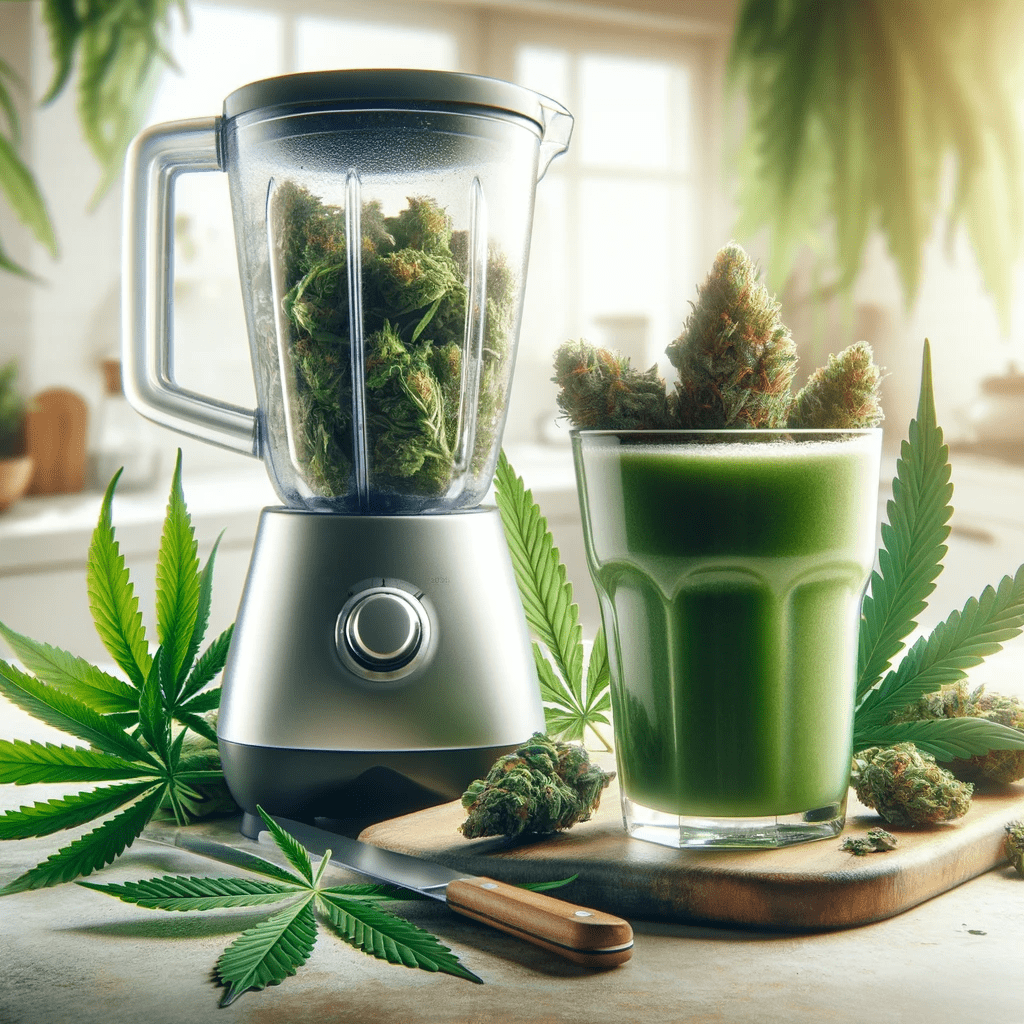
By: Juan Sebastian Chaves Gil
You’ve likely heard or read about the preparation of marijuana juice, sparking your curiosity to give it a try. Therefore, we’ve decided to dedicate a specific article to this innovative way of utilizing cannabis to harness its remarkable benefits without experiencing significant side effects.
The recipe for this medicinal cannabis-based beverage is attributed to Dr. Courtney, a recognized physician and activist in the cannabis field who has dedicated himself to researching and promoting the impressive benefits of marijuana juice for those interested in tapping into them. While it’s a unique way to consume marijuana, it’s essential to note that there are no scientific studies that fully endorse its benefits at 100%.
After providing a brief introduction to marijuana juice, we’ll delve into its nature and how to prepare it.
What exactly is marijuana juice?
Marijuana juice is a beverage made from the leaves, stems, branches, and buds of both male and female marijuana plants. It has been associated with various health benefits and the potential to alleviate symptoms of various diseases and conditions. Its preparation is simple and can be done at home with relative ease.
Dr. William L. Courtney is the pioneer behind this marijuana beverage. He is a physician with extensive experience in the medical field and a passionate advocate for the multiple benefits of marijuana juice. His notoriety skyrocketed globally after one of his patients, Kristen Perkuski, who suffered from lupus, an autoimmune disease that mistakenly affects healthy cells and tissues, experienced significant improvement in her multiple issues through marijuana juice treatment, allowing her to lead a more normal life
What are the benefits of marijuana juice?
Throughout history, the benefits and applications of marijuana and hemp plants have been widely recognized. In this case, the benefits of the juice are attributed to the cannabinoids produced by the plant, such as THC, CBD, CBN, and CBG, among others. Additionally, chlorophyll, terpenoids, flavonoids, alkaloids, and components like magnesium and proteins also play a role. However, for the most part, the beneficial effects come from cannabinoids.
Benefits include disease prevention, anti-inflammatory properties, improved immune system, antioxidants, prevention of molecule oxidation, increased metabolism, antibacterial properties, protein and amino acid contribution, analgesic effect, anti-convulsive properties, appetite stimulation, antidepressant and antimetastatic properties, improved healing, supply of vitamins A, C, and E, blood oxygenation and purification, improved digestion, diuretic effect, among others.
It’s important to note that many of these benefits are attributed to chlorophyll, which is comprehensive and could be considered part of a healthy daily diet. Its advantages include reducing cholesterol and triglycerides, promoting ulcer healing, improving calcium absorption, boosting memory, balancing glucose levels, and combating fungi and bacteria.
Furthermore, to achieve such a broad and comprehensive effect, it’s crucial to consume cannabinoids in their acidic form, such as THC-A and CBD-A. This minimizes the psychoactive effect and allows optimal utilization of the benefits of these substances in their acidic form.
It’s essential to consider that marijuana juice does not produce a significant psychoactive effect unless heated or used with marijuana or dried leaves. In the worst case, it may cause a mild sense of well-being due to the combination of terpenes in marijuana. If decarboxylated material is used, the effect will be much more potent.
How is marijuana juice prepared?
First and foremost, it is essential to select plant material from plants treated exclusively with 100% certified organic products. The use of plants cultivated with manure, chemicals, or other elements not classified as organic or vegan should be avoided. Subsequently, the material should be quickly rinsed with quality water or distilled water to remove dust and ensure cleanliness.
Another crucial requirement for optimal results is to use fresh plant material. Dry or partially dry marijuana is not suitable; it should be freshly extracted from a live plant as much as possible. Dr. Courtney recommends using 12 medium-sized leaves and a couple of early-harvest buds, also of medium size. Small branches and trunks can also be used.
The plant material is placed in a blender with a little water and mixed until it reaches a dense but liquid texture. If the mixture seems too thick, a little more water can be added. This way, we will obtain our medicinal marijuana juice.
How is marijuana juice consumed?
Once the juice is prepared with the mentioned quantities of plant material, it is recommended to divide it into three parts and consume it throughout the day. This is the most common recommendation. Before ingestion, it should be mixed with another natural juice, such as carrot juice, in a ratio of 9 parts carrot juice to 1 part marijuana juice. This enhances the taste and facilitates consumption. This marijuana juice can be stored in the refrigerator for a maximum of three days from preparation.
It is not advisable to consume marijuana juice for people with gallbladder problems, kidney problems, or those who are pregnant.

What To Call The Illegal Marijuana Market

Pakistan Makes Positive Move On Cannabis

The Dangers and Effects of THC Vape in UK
How to Buy or Sell a Cannabis Business: The Webinar Replay
Alabama Senator Calls State Medical Cannabis Commission A ‘Money Pit’ Amid Ongoing Litigation

Is Thailand about to Change Their Cannabis Laws Yet Again?

Does Lizzo Consume Weed – The Fresh Toast

Do Delta 8 Edibles Work For Female Arousal?

Could You Help Your Lips With CBD Balm

California Awards $12 Million In Local Cannabis Equity Grants To Repair Drug War Harms

Distressed Cannabis Business Takeaways – Canna Law Blog™

United States: Alex Malyshev And Melinda Fellner Discuss The Intersection Of Tax And Cannabis In New Video Series – Part VI: Licensing (Video)

Drug Testing for Marijuana – The Joint Blog

What you Need to Know

Cannabis, alcohol firm SNDL loses CA$372.4 million in 2022

NCIA Write About Their Equity Scholarship Program

City Of Oakland Issues RFP For Employee Training Programs

It has been a wild news week – here’s how CBD and weed can help you relax

A new April 20 cannabis contest includes a $40,000 purse

UArizona launches online cannabis compliance online course
Trending
-

 Cannabis News1 year ago
Cannabis News1 year agoDistressed Cannabis Business Takeaways – Canna Law Blog™
-

 One-Hit Wonders1 year ago
One-Hit Wonders1 year agoUnited States: Alex Malyshev And Melinda Fellner Discuss The Intersection Of Tax And Cannabis In New Video Series – Part VI: Licensing (Video)
-

 drug testing5 months ago
drug testing5 months agoDrug Testing for Marijuana – The Joint Blog
-

 Cannabis 1011 year ago
Cannabis 1011 year agoWhat you Need to Know
-

 Marijuana Business Daily1 year ago
Marijuana Business Daily1 year agoCannabis, alcohol firm SNDL loses CA$372.4 million in 2022
-

 Education1 year ago
Education1 year agoNCIA Write About Their Equity Scholarship Program
-

 Education1 year ago
Education1 year agoCity Of Oakland Issues RFP For Employee Training Programs
-

 Cannabis1 year ago
Cannabis1 year agoIt has been a wild news week – here’s how CBD and weed can help you relax



